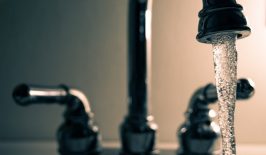Given that water is one of our most precious (and scarce) resources, one cannot speak of sustainable city living without broaching the topic of rainwater harvesting. Simply put, rainwater harvesting involves the collection and storage of rainwater for re-use. Rainwater can be a valuable source of water for many different household functions including providing a safe (clean) supply of potable water, water for irrigation and livestock as well as other typical household functions.
The practice has a rich history in the Kutch region (present day India) where archaeologists have found more than 60 000 rainwater harvesting structures dating as far back as the third century BC.In more recent times, however, focus has shifted and rainwater harvesting is no longer a chief supplier of water in Indian communities. India’s exceptional weather conditions (with most rain falling over very short spells of time, mainly during the Monsoon period), make the harvesting of rainwater during these times crucial. Concentrated and large-scale, state -run rainwater harvesting projects in Indian cities have added the benefit of reducing the risk of urban flooding during periods of intense rainfall as well as playing a role in replenishing supplies of groundwater.
So, governmental projects aside, the question is what we, as ordinary citizens, can do in order to tackle this problem and make rainwater harvesting work for us? The good news is that water harvesting systems are cheap, simple to install and extremely cost-effective in the long run – significantly reducing water bills and providing a reliable source of water that, in most cases, can satisfy the water needs of a household.
Here is a step-by-step guide, released by the Centre for Science & Environment (CSE) explaining everything you need to know (including information about legal and cost issues) when setting up a water harvesting project in your own home, school or business. So come on, what are you waiting for? Let’s understand, all over again, how to value the raindrop and play our part in building a sustainable future. This is somewhere where YOU can make a difference.


